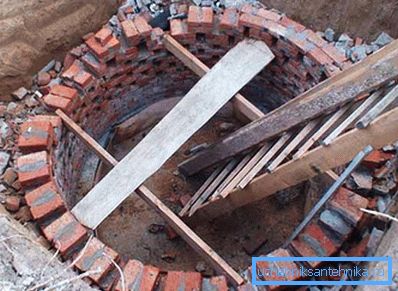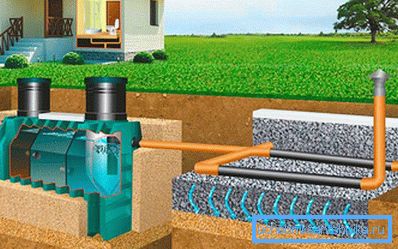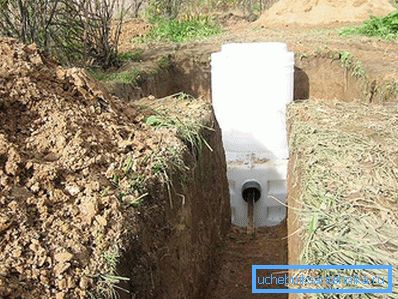Wastewater treatment systems
When designing suburban private housing, the issue of arranging waste disposal systems is usually given a lot of attention. This takes into account that the most suitable for this case are such systems of sewage treatment and sewage collection, such as:
- cesspools used as accumulators of household waste;
- special septic tanks (septic tanks);
- biological treatment systems (stations).
Tip! The functioning of all these systems is organized with the participation of natural microorganisms, for which waste is an excellent nutrient medium. At the same time, the quality of the purification itself depends on the number and species composition of the bacteria, classified according to generally accepted standards.
Cesspools

Thus, the arrangement of local sewage treatment systems involves the use of certain methods that provide the most different degrees of purification.
The cesspools are used as the simplest accumulators of waste and sewage, which are periodically cleaned with the help of special sewage disposal equipment. Certain types of such storage facilities do not have a bottom and suggest the presence of a special filtering layer of sand and rubble through which partially treated waste seeps into the soil.
But such an approach to waste management, as a rule, leads to soil pollution, and therefore bottomless cesspools are not allowed to be used near drinking water sources (wells, boreholes, etc.), as well as close location of groundwater.
Using the cesspool as the simplest filtering device has the following advantages:
- extreme simplicity of construction.
- minimum cost of manufacture and operation;
- no need to prepare additional treatment zones (filtration fields or wells).
Tip! Before choosing a cesspool as a sewage treatment plant, be sure to pay attention to the fact that these systems have a number of drawbacks. Such, for example, as the need for systematic pumping of sewage, a high probability of contamination of the soil, as well as the presence of unpleasant odors.
Septic tanks

The classic septic tank is a construction of interconnected containers, the cleaning of household wastewater in which is carried out mechanically. Separate tanks communicate with each other by means of overflow pipes, so that the mud flows sequentially from one tank to another. In the first of these tanks, heavy solid fractions are deposited, followed by partial decomposition under the influence of bacteria. Non-decomposed sediments deposited on the bottom of the septic tank are periodically pumped out by a septic tank or removed from the system manually.
In the so-called sedimentation tank (usually consisting of 2 or 3 tanks), it is possible to clear the drains by a maximum of 60–70%, since the light fractions from the waste are not removed, but remain in a dissolved form. For their additional purification, special structures are used, the choice of which is determined by the characteristics of the soil.

Most often for these purposes, the so-called filtration fields are used, which are a system of spray pipes placed in special trenches with filtering properties. Under these pipes fit the drainage necessary for the removal of treated water.
Tip! The filtration field should be installed at a certain distance from natural sources of drinking water; at the same time, the depth of their laying should not exceed the level of soil freezing at a given place.
The disadvantages of water purification systems using devices such as "septic" should include:
- low level of sewage treatment;
- the need to use additional treatment facilities;
- the need for regular cleaning of septic tanks.
Biological treatment systems

All of the above disadvantages are deprived of the so-called biological treatment stations, the functioning of which is based on the principle of waste treatment by the combined effect on them.
In such systems, the mechanical method is combined with the simultaneous treatment of waste with the help of aerobic and anaerobic bacteria, which guarantees that at the outlet industrial water with a purification rate of up to 98%.
The principle of operation of systems of this class is quite simple. First, the wastewater enters the receiving compartment of the device, where large particles are crushed, and the waste itself is saturated with oxygen. After such preparation, drains are passed through a “coarse” filter, and then redirected to a special chamber, where their biological treatment is carried out.
Treated in such a way drains are discharged into nearby reservoirs or used for watering the garden plot.
Video
This video demonstrates installation of the ANILON biological wastewater treatment system:
Wastewater treatment system Topol-Eco: